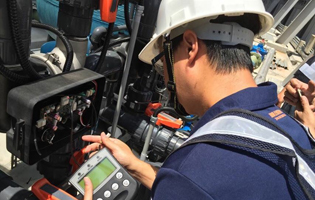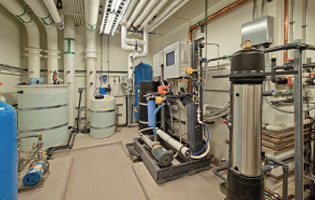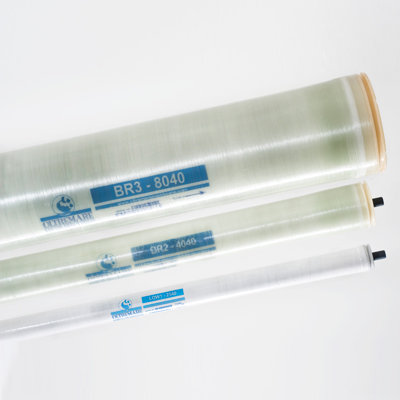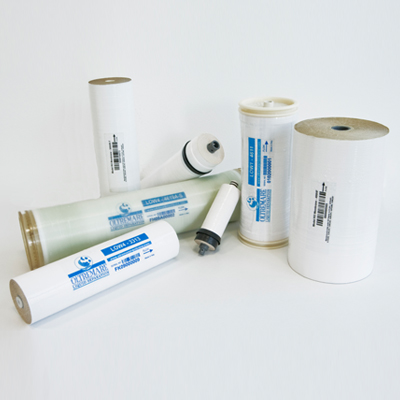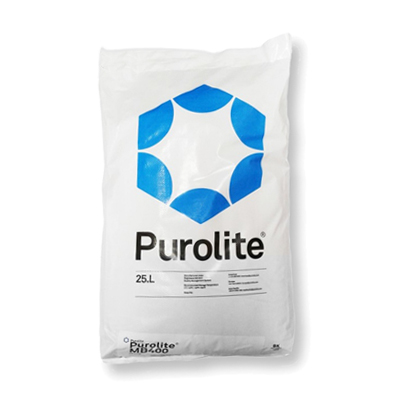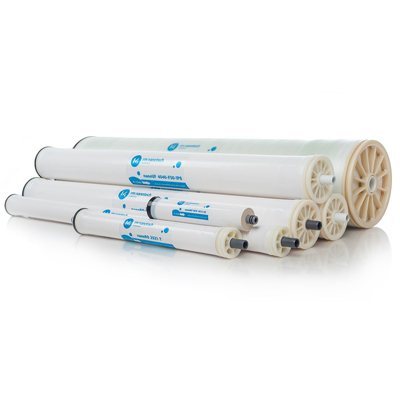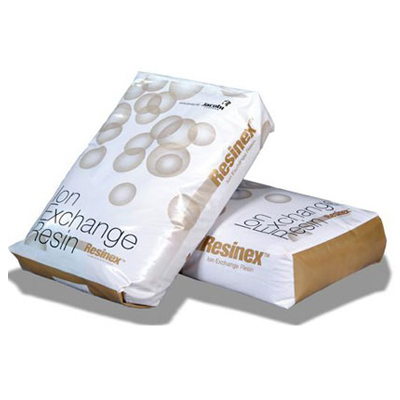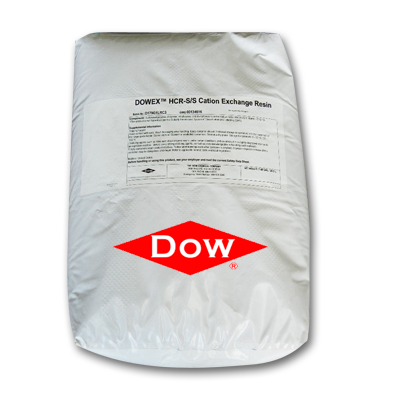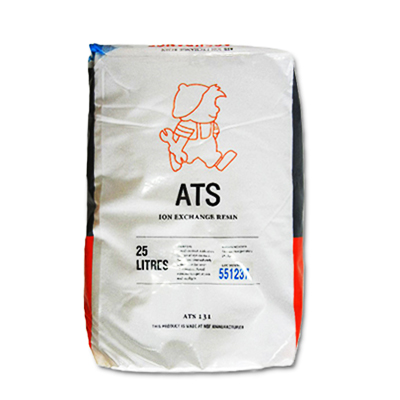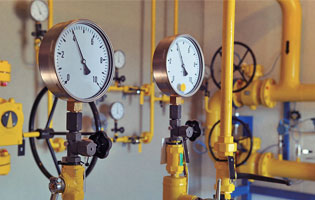| Alkalinity |
Alkaline exists in three forms including: charged alkali salt (or hydroxide) carbonate and bicarbonate. The raw water may contain calcium bicarbonate, magnesium and sodium or exist alone or mixed in water. The alkalinity is often expressed by the concentration of calcium carbonate (PPM). Due to the different methods of qualitative analysis, it can be divided into P and M methods. The P method was titrated with standard acid to the end point of phenol. M-law titration to the end point of methyl orange, the calculation of alkalinity will be explained in another technical education module. |
| Attrition |
Cracks and abrasions of resin particles. |
| Backwashing (Backwashing, Backwashing) |
The ion exchange resin bed is flushed back (upward) with water to wash out impurities and reduce the compactness of the resin bed. |
| Bass Exchange |
The cations between the solution and the cation exchange resin are exchanged with each other. |
| Batch Operation |
The method is to put the resin and the solution to be treated in a container for ion exchange, and then pour out the water or filter it out. |
| bed |
The ion exchange resin is placed in a cylindrical vessel (FRP barrel). |
| Bed Depth |
Depth of ion exchange resin in cylindrical vessel (FRP barrel). |
| Bed Expansion |
Due to the impact of backwashing, the ion exchange resin particles separate from each other and float up, resulting in the expansion of the resin bed. |
| Boiler Feedwater |
Used as feed water for steam boiler, the feed water can be raw water, treated water, condensed water or a mixed liquid of the above, as required. |
| Breakthrough |
The concentration of exchange ions in the effluent liquid reaches a predetermined limit, which is usually the end of the exhaustion cycle and the beginning of the regeneration cycle. |
| Channeling |
In the ion exchange bed, due to air pockets, sand and other factors, the uneven pressure gradient in the bed leads to the direction of water flow to the direction of less resistance to form a channel. The flow of the channel will hinder the overall contact between the water and the ion exchange bed. |
| Chemical Stability |
The ability of an ion exchange resin to resist deterioration when in contact with an active solution (such as an oxidizing agent), or the inherent resistance to degradation of an ion exchange resin. |
| Color Throw |
The color transferred from the ion exchange resin to the solution. |
| Column Operation |
One of the most common water treatment methods is to pass water through a fixed bed of ion exchange resins. |
| Crosslinkage |
The sickle-shaped polymer is interlocked with a cross-linking substance to form a tertiary insoluble copolymer. |
| Degasifier |
Also known as decarbonation tower, it is used to reduce the carbon dioxide content in water after hydrogen ion exchange treatment. The CO2 content in the water can be reduced to 8PPM but the degassed water may be saturated with air. A common problem in demineralization procedures is that air impurities contaminate the treated water, especially in industrial areas and near power plants. Appropriate air filters in this situation can solve the problem of pollution. |
| Vacuum Degasifier |
The official name is the deaerator, which reduces the oxygen, carbon dioxide and other gases in the water to the lowest to the lowest concentration. When used in the boiler supplementary water treatment, it is mainly used to reduce the concentration of CO2, reduce the corrosion problem and eliminate the pollution impurities in the water. The use of a vacuum degasser generally extends the life of the ion exchanger. |
| Deionization |
Ion exchange process to remove dissociable substances and silica contained in water. Usually, deionized water can be obtained by subjecting the liquid to be treated through hydrogen cation exchange treatment and then applying OH strong base anion exchange and other treatment procedures or directly combining it into one stage of treatment. |
| Effluent |
The liquid (water) flowing out of the ion exchanger is also called effluent. |
| Exchanger Bed |
The ion exchange resin is filled in a suitable container, and auxiliary materials such as sand and gravel, mesh disks, etc. are also filled in the container to help the uniform distribution of the liquid. |
| Exhaustion |
When an ion exchange resin is exhausted, the ion exchange resin is said to be consumed. |
| Fines |
Very fine ion exchange resin particles, not suitable for ion exchange operation, will reduce the function of the resin. |
| Reserved space (Freeboard) |
The reserved space between the ion exchange resin container and the exchange bed is used for the expansion of the exchange bed during backwashing. |
| Hardness |
It refers to the presence of calcium and magnesium in water, these two elements are the main culprit in the manufacture of scale. Iron is also a kind of hardness, and even a small amount in water can often cause problems in ion exchange processing. Calcium carbonate and magnesium carbonate are temporary hardness, while calcium sulfate and magnesium fluid are permanent hardness, and it is not necessary to consider whether the hardness is temporary or permanent when treated with ATS ion exchange resin. |
| Pressure drop (Headloss) |
Loss of hydraulic pressure due to friction as the solution passes through the ion exchange resin bed. |
| Hydraulic Classification |
When an ion exchange resin tower is backwashed, the resin with large particles settles faster and thus settles at the bottom of the tower, and the resin with smaller particles settles on the resin with large particles. |
| Hydrogen Cation Exchanger |
When an ion exchange resin is regenerated with acid, hydrogen ions replace metal ions, which combine with acid to form acid salts. |
| Hydrogen Cycle |
Regeneration of ion exchange resin with acid or operation of ion exchange resin in hydrogen form. |
| Influent |
The solution to be treated flows into an ion exchange device. |
| Interstitial Volume |
The void volume between ion exchange resin particles. |
| Iron |
Iron is often present in groundwater in a reduced, dissolved form (eg, iron bicarbonate), usually at concentrations between 0.5 and 10 PPM or higher. Surface water often contains small amounts of iron due to pollution. When iron in water contacts with air, it is easy to oxidize and precipitate into a reddish-brown suspension, so it can be removed by adding oxygen or chlorine or using BIRM filter material to oxidize it and then apply filtration, lime softening, and ion exchange procedures to remove it. If only a small amount of water with a high concentration of iron is to be processed, we recommend using an oxidative filter material such as BIRM filter material to directly remove iron. |
| Leakage amount (hardness, sodium, sand, etc.) |
The leakage is caused by the incomplete regeneration reaction. Since the complete regeneration cycle is not economical, the general ion exchange equipment users take into account the operating cost (time-consuming) and often start the regeneration when the regeneration reaches 1/2 to 2/3 of the maximum capacity. operation, which may cause unfinished exchange of hardness to leak out. Usually the cost can be reduced by the investment cost, such as the purchase of better or larger ion exchange equipment so as not to reduce the quality of the treated water due to leakage. |
| Operating Capacity |
It refers to the part used in the operation of the maximum capacity of the ion exchange resin. The operation capacity is often represented by the weight of the removed ions divided by the volume of the bed, such as g/ft3. |
| Organic Matter |
Organic substances often exist in water, or due to natural pollution such as swamps, or pollution from industrial and household waste water. Before the ion exchange treatment, the organic substances in the water must be removed, such as chlorine, condensation and other pretreatment procedures. |
| Physical Stability |
Ion exchange resins may be resistant to rupture due to external operations or due to osmotic shock or repeated adsorption of different ions. |
| Porosity |
Porosity is a qualitative description: the nature of the solute in and out of the ion exchange resin particles through diffusion, the solute usually refers to larger ions or molecules such as organic acids, etc. The porosity is related to the substances contained in water and the relationship between resins. Links are irrelevant. |
| Suitable for drinking water (Potable Water) |
Drinkable water that meets health and hygiene standards. This water may contain a small amount of hardness minerals and may also contain salts, but it is not harmful to human health. |
| Process Water |
Water mixed with any substance, used to clean the product, or part of the product can be called process water. Process water may require treatment such as clarification and filtration before it is discharged or regenerated. In many cases ATS resin is used in water. Softening, desalination or deionization treatment. |
| Regenerant |
Chemicals are used to convert the ion exchange resin so that it can be reused (regenerated). |
| Regeneration |
Regenerating the consumed ion exchange resin with a regenerant to remove the adsorbed impurities is called regeneration. This is done by passing the regenerant through a bed of ion exchange resin in forward or reverse flow. |
| Regeneration Level |
The regeneration dose used in the regeneration cycle, often expressed in g/ft3. |
| Rinse |
Rinse the regenerant remaining in the ion exchange resin with water. |
| Sand (Silica) |
Sand and gravel are silica, which exists in large amounts in nature. Water usually contains a small amount of sand and gravel in the form of solute, colloid or suspension, but the latter two can be softened by cold or hot lime or by cold coagulation (Cold Coagulation) method. be removed. The cold treatment method is less effective for silicic acid (solute) dissolved in water, but the hot method can reduce its concentration below 1PPM. Ion exchange resins can effectively remove sand and gravel solutes, but are ineffective for colloidal and suspended silica. |
| Sphericity |
It means that the ion exchange resin is a damaged prototype. |
| Strong Base Anion Exchanger |
The anion exchange resin is regenerated with caustic to remove strong and weak acids from the effluent of cation exchange equipment. |
| Sodium Cation Exchanger |
The cation exchange resin was regenerated with the sodium salt (NaCl). It is used to exchange metals such as calcium and magnesium in water to form sodium salts such as Na2SO4 and Na2CO3. |
| Total Capacity |
The maximum exchange capacity of the ion exchange resin. |
| Waste Water |
Wastewater can usually be recycled to remove toxic or other impurities, or cleaned by an ion exchange process. Especially precious metals, such as silver and chromium in electrolysis wastewater, can be recovered by ion exchange and the water can be treated at the same time. |
| Zeolite |
A natural hydrated silicate containing aluminum and sodium or aluminum and calcium, which is usually used for water softening treatment such as laver softener, hot lime laver, etc. |


